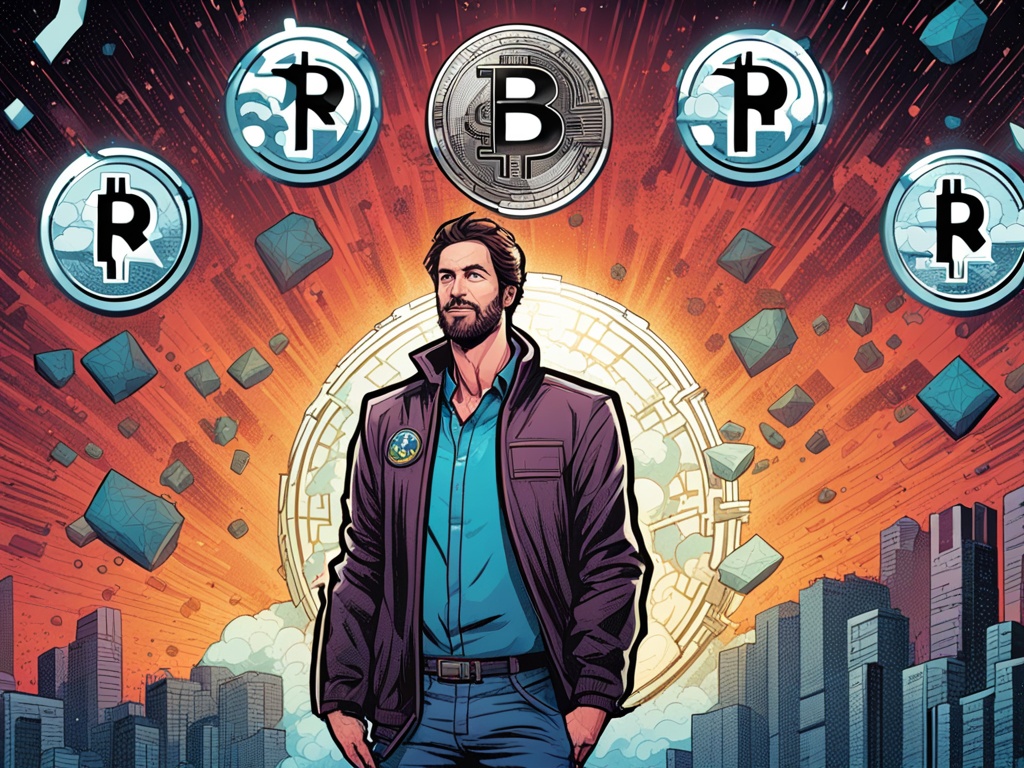Is Tether’s Move a Sign of Things to Come for Stablecoins?
Hey there! So, picture this: you’re at a bustling cafe in downtown LA, sipping your favorite iced coffee, and you overhear a conversation about Tether dropping its euro-backed stablecoin, the Euro Tether (EURT). It’s a pretty big deal in the crypto sphere, and it got me thinking: what does this mean for the sprawling, sometimes chaotic world of cryptocurrencies? Buckle up! I’m here to break it down for you.
Key Takeaways
- Tether has ceased minting Euro Tether (EURT) due to regulatory challenges in Europe.
- Those holding EURT can redeem their tokens until November 25, 2025.
- Tether’s USDT remains immensely popular with a daily trading volume of $83.7 billion, overshadowing EURT’s meager $2 million.
- Regulatory frameworks like the EU’s Markets in Crypto Assets (MiCA) law are changing how stablecoins operate.
- Tether is shifting its focus to other initiatives, including the Hadron tokenization platform.
The Euro Tether Decision: A Tactical Retreat?
So, let’s dive into why Tether did this. When they say they’re pausing the minting of EURT, it’s more than just a small hiccup; it signals a shift in strategy due to the regulatory climate in Europe. The pressures that come along with regulatory hurdles can be a heavy weight. Tether effectively mentioned that they’re aligning with a “broader strategic direction” and that innovation needs a stable framework which is currently lacking over there.
Now, don’t get me wrong—Tether isn’t going anywhere. They still have their USDT, which is a heavyweight champ in the current market, and they’ll surely keep pushing forward. But focusing efforts on areas with more favorable regulations? Smart move!
The Impact of MiCA Regulations
Now, let’s talk regulations for a sec. The EU’s Markets in Crypto Assets law was set up last year to tighten the reins on stablecoins. They’ve moved to create more stability and trust in the market, especially in the face of increasing skepticism around crypto. With Tether stepping back from EURT, it raises questions about how other stablecoins might adapt—or retreat—in the face of EU oversight.
- What is MiCA? It’s a framework that targets stablecoins directly, aiming to regulate the crypto landscape to protect consumers and avoid systemic financial risks.
- Why Does This Matter? If you’re an investor, tighter regulations can either be a huge barrier or a necessary gatekeeper that helps legitimize crypto assets. The hope is that it fosters more stable growth in the long run.
The Big Picture for Stablecoins
Okay, now let’s zoom out a bit. Stablecoins play a crucial role in the crypto universe, almost like the anchoring star in a galaxy filled with meteors. Traders use USDT as their go-to for trading without jumping back to traditional finance.
Imagine being in the market when waves start crashing down—having stablecoins like USDT helps you surf those waves effectively. The fact that Tether’s USDT has so much trading volume (like, a whopping $83.7 billion in just 24 hours!) compared to EURT’s measly $2 million tells you something, right? It’s like comparing the Super Bowl to a friendly backyard game.
What Can Investors Do?
If you’re considering investing in crypto or enhancing your portfolio, keep these practical tips in mind:
-
Stay Informed: Always stay updated about regulations and news. These can affect asset values quicker than you think!
-
Diversify: Don’t put all your eggs in one basket! Consider holding a variety of stablecoins and cryptocurrencies to reduce risk.
-
Understand the Landscape: Know which tokens are backed by what. It enhances your investment strategy.
-
Watch Trading Volumes: Dive into trading volumes; they give you insight into market popularity and activity.
- Be Skeptical: The crypto world is rife with rumors and hype. Always do your due diligence before investing.
Personal Insights
Here’s the deal: I think Tether’s move might just be a blessing in disguise in terms of galvanizing the crypto space towards healthy regulation. If Tether and other players adapt well, we’re potentially staring at a more robust market in the near future. But the sentiment among users is a mixed bag. On one hand, we feel the excitement of innovation, and on the other, there’s that nagging worry about regulations potentially stifling growth.
Tether’s shift towards focusing on tokenization platforms like Hadron also piques my interest. Tokenization is the future; we’re talking about real-world assets becoming digital. How cool is that? It can bring liquidity where there was none and represents a significant stride towards blending traditional finance with blockchain tech.
In Conclusion: Reflecting on the Future of Crypto
So, what do you think—are we seeing a new dawn for the stablecoin industry with Tether’s decision, or is this a sign that regulations could squeeze innovation out of the picture? I’m eager to hear your thoughts on where you see stablecoins heading and how they can adapt to regulatory changes while still providing the benefits we all love. It’s a wild ride ahead, folks!





 By
By
 By
By

 By
By
 By
By
 By
By